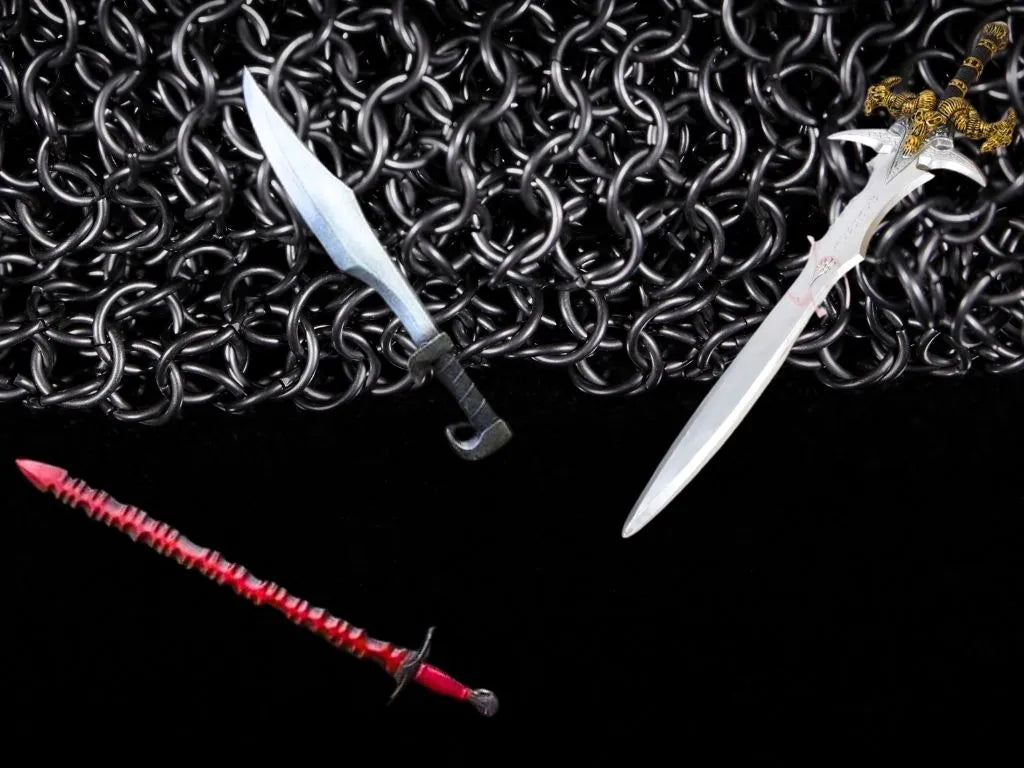No weapon has captured the imagination and epic spirit like the medieval sword. Forged in the heat of battle and steeped in a rich tradition of craftsmanship, the medieval sword stands as an eternal symbol of honor, chivalry, and the fight for justice.
In this article, we will explore the evolution, characteristics, and legacy of the medieval sword, an icon that has left an indelible mark on history and culture.
https://espadasymas.com/collections/espadas-medievales
Forging in the Age of Chivalry: The Birth of the Medieval Sword The Middle Ages witnessed the rise of chivalry and the need for efficient weapons on the battlefield. The medieval sword, with its sharp blade and balanced design, became the knight’s indispensable companion. Forged in the crucible of medieval metallurgy, these swords were testaments to the craftsmanship and technical prowess of the blacksmiths.
Check out our forged medieval swords:
https://espadasymas.com/collections/espadas-functionales
More than just a Sharp Blade: With its double-edged blade and sharp point, it was versatile in close combat. Its design, which ranged from longswords to shortswords and daggers, allowed warriors to adapt to different combat situations. The guard and pommel were often ornate, displaying both artistic and functional details.
The Age of Longswords: Combat and Technique During the height of the Middle Ages, longswords became synonymous with nobility and martial skill. These double-edged weapons were wielded with refined techniques, and knights underwent years of training to master the art of medieval fencing. Longswords, such as the Claymore and the Bastard Sword, became renowned for their versatility and lethality in skilled hands.
This is a Claymore:
The Code of Chivalry: Honor and the Sword The medieval sword was not only an instrument of war; it was also a symbol of the code of chivalry. Knights swore to uphold justice, loyalty, and bravery, and their swords became silent witnesses to these ideals. The ceremony of bestowing a sword upon a knight was an act grounded in transcendence and symbolized commitment to these principles.
Decline and Renaissance: From Wars to Collectibles Over time, advancing technology and war tactics changed, marking the decline of the military use of the medieval sword. However, its legacy lived on in culture and mythology. In modern times, medieval swords have experienced a renaissance, no longer just as tools of war, but also as collectibles and symbols of connection to the past.
In Popular Culture: From Legends to Screens Medieval swords have transcended reality to become staples of popular culture. From Arthurian legends to cinematic epics, these swords have inspired stories that have stood the test of time. Every medieval sword has a story to tell, whether in the pages of a book or on the big screen.
The Medieval Sword Endures Forged on the anvil of history and tempered in the flame of combat, the medieval sword continues to endure as a symbol of bravery and nobility. Its legacy has left a deep mark on history, culture, and mythology, reminding us that beyond its function as a weapon, the medieval sword is a timeless testament to craftsmanship and the essence of chivalry.
Here you have all the medieval swords:














